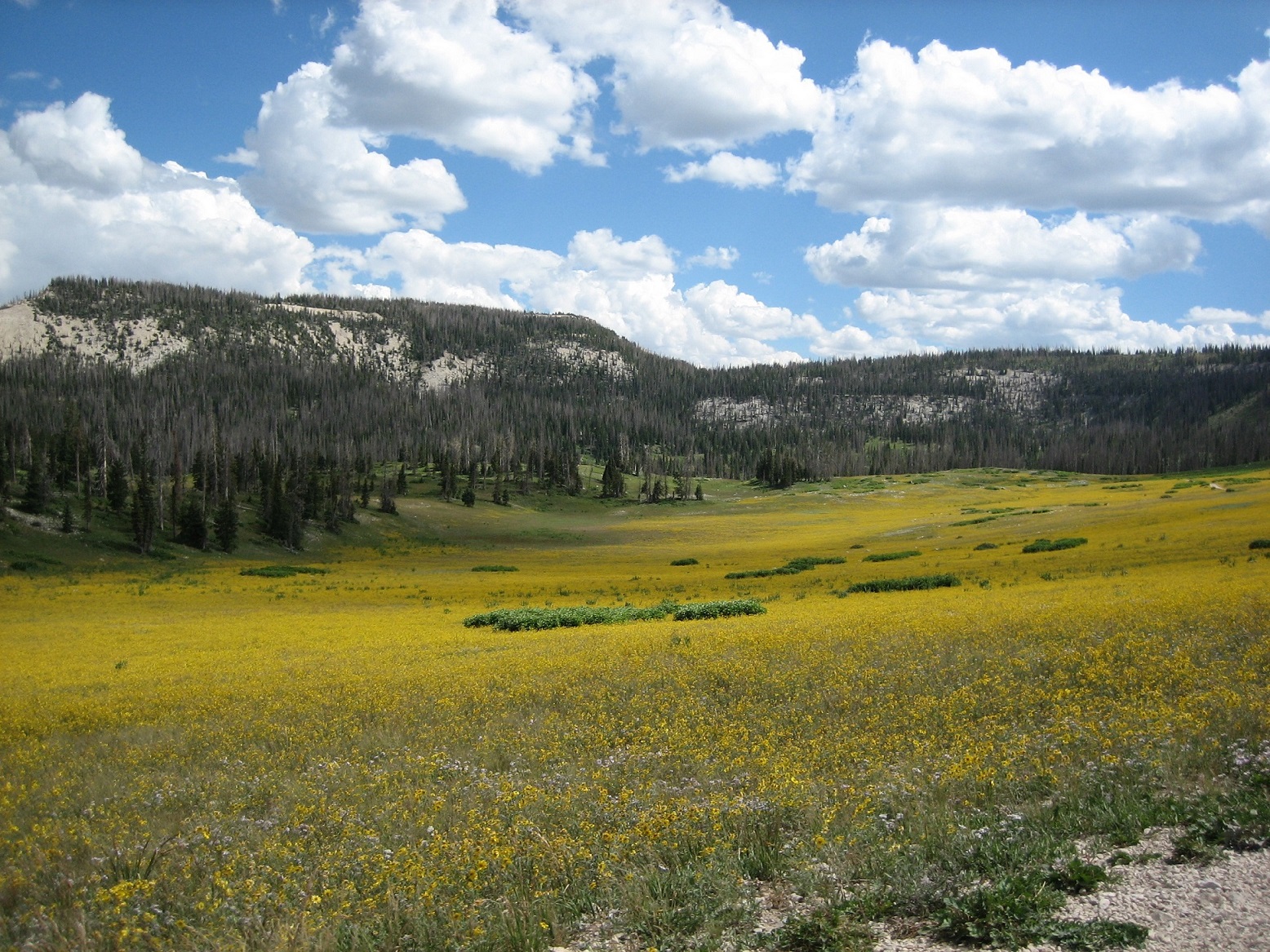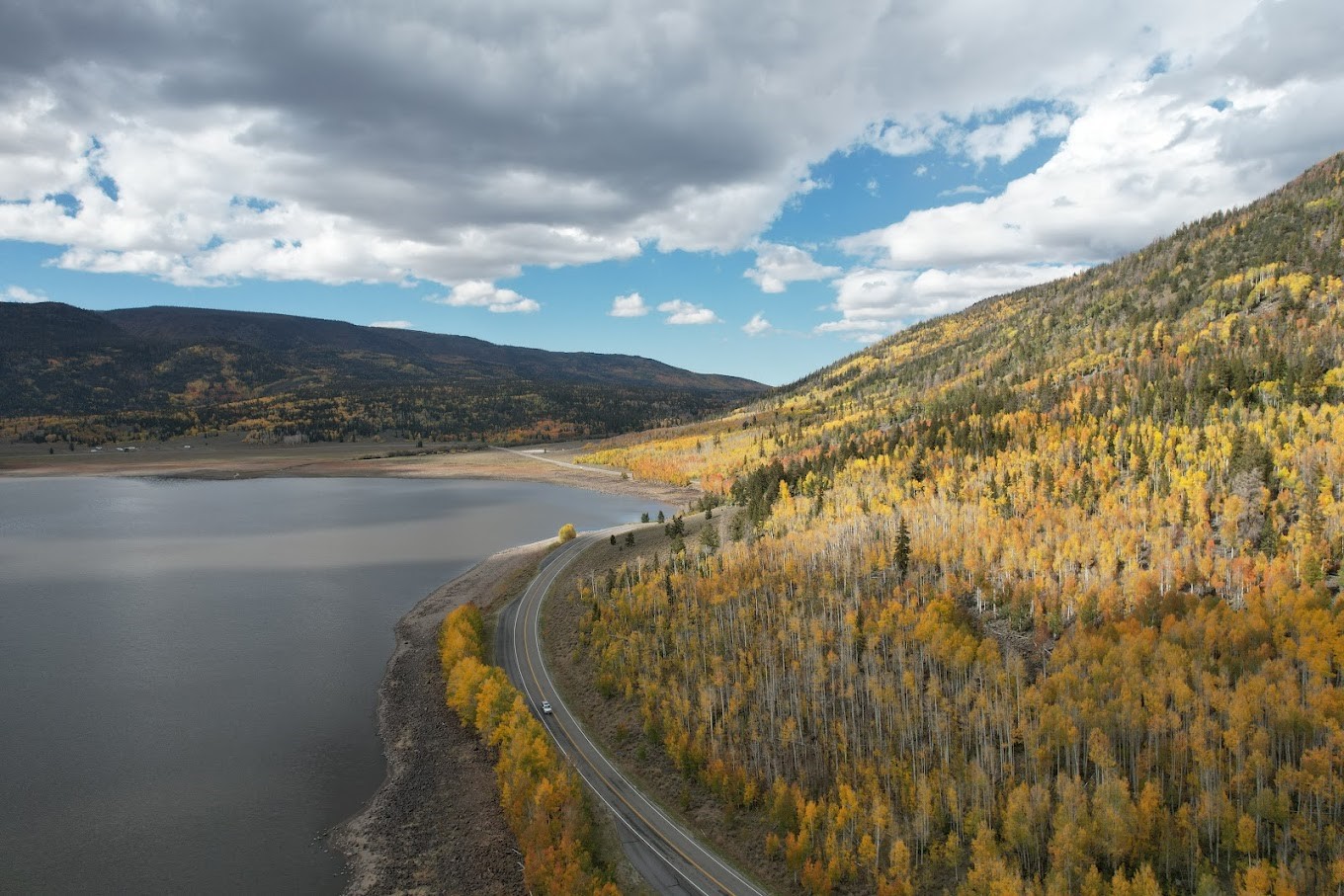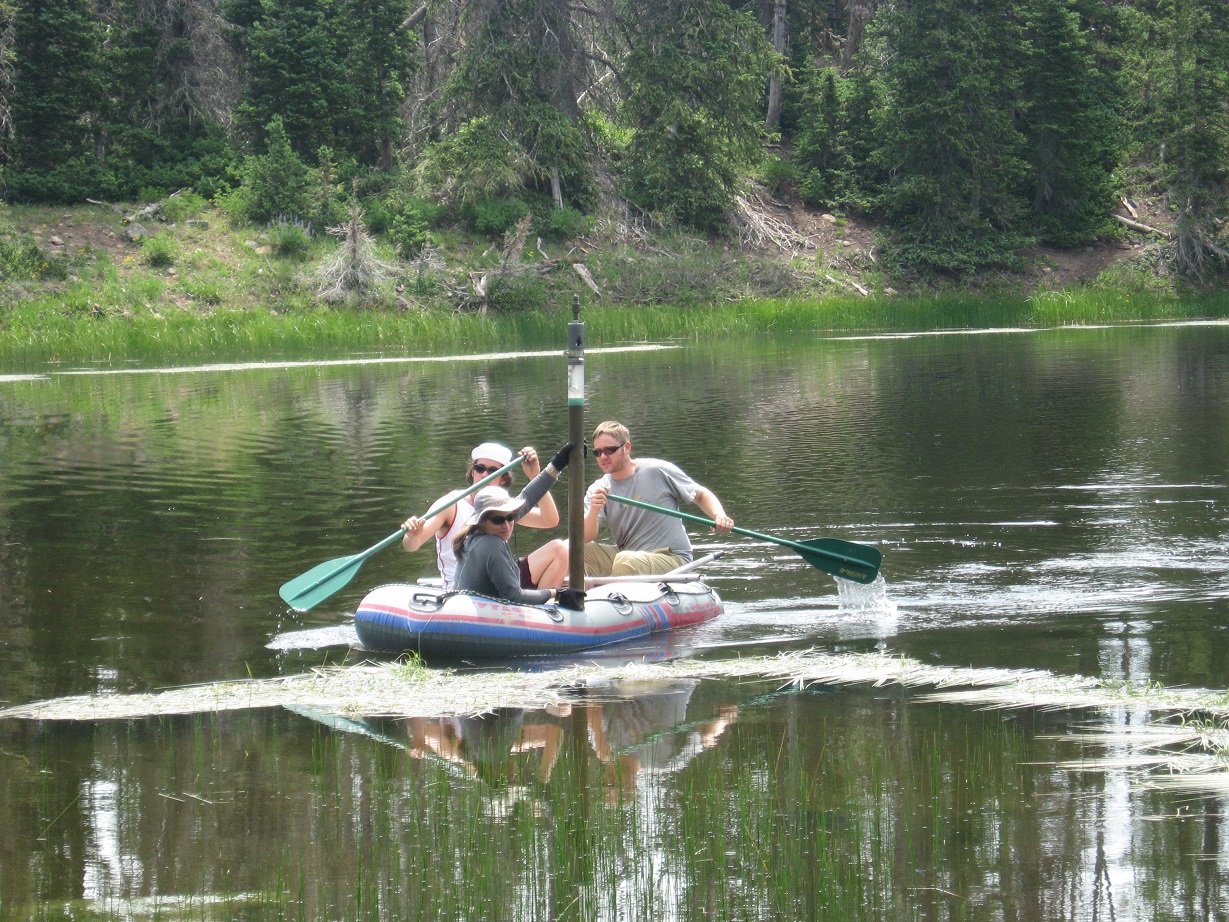High Plateaus, Utah
This research focuses on the high-elevation plateaus and ranges landforms that are Utah’s headwaters for the Upper Colorado River Basin. These landforms frequently exceed 3000 meters in elevation and feature dense stands of Englemann spruce, subalpine fir, and quaking aspen interspersed by lakes and meadows. Glaciers, wildfires, bark beetles, and human activities have profoundly shaped these landscapes and ecosystems over time.
The current project in Utah’s High Plateaus is funded by the National Science Foundation and focuses on Fish Lake. Fish Lake is the deepest, naturally occurring freshwater lake in Utah and is located near to the Pando aspen clone. Pando is one of the largest, heaviest, and potentially oldest clonal organisms on earth. The RED Lab is actively analyzing sediments from an 18.5-meter-long core that span the last 60,000 years of earth’s history. This research will provide important information about how long-term shifts in the earth system have altered hydrology, disturbance regimes, and human activity in this dynamic region.
If you are interested in getting involved in this research, please contact Dr. Jesse Morris at jesse.morris@utah.edu.

Spruce beetle damage on the Wasatch Plateau in the Manti-LaSal National Forest

Aerial drone photo of Fish Lake and the Pando aspen clone

Sediment coring on the Markagunt Plateau near Cedar Breaks National Monument
Funded By:NSF Award 2102997

